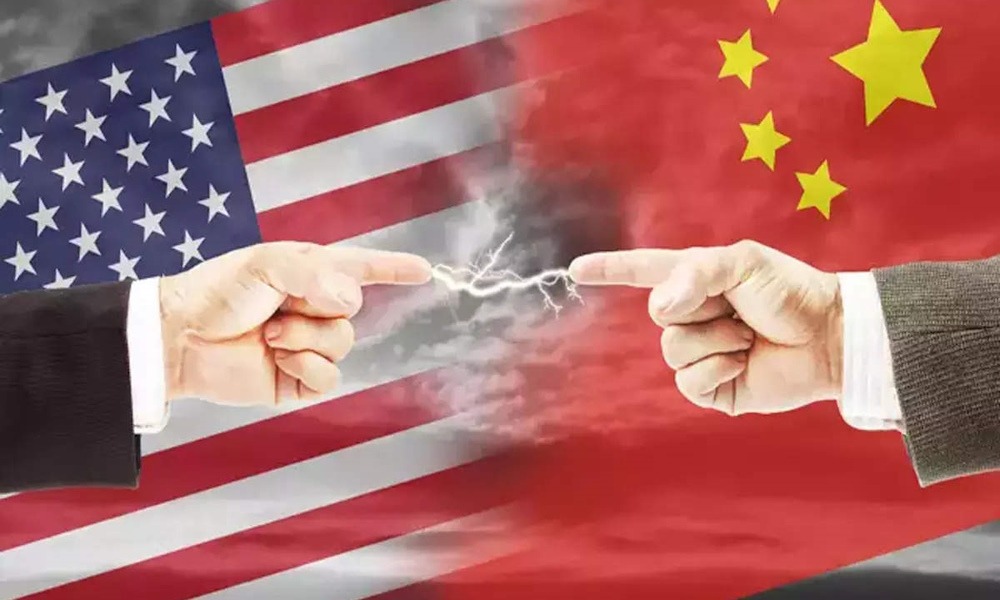Trump’s China tariffs are causing American businesses to stockpile

By 9 p.m. on election night, it was evident to Jason Junod that Donald Trump was poised to make a return to the White House. That evening, he reached out to the suppliers of his skin-care company in China to procure a year’s supply of inventory for approximately $50,000—maximizing both his budget and storage capacity. He anticipates that the approximately 30,000 body brushes and exfoliating gloves will arrive at Bare Botanics’ facility in Madison, Wisconsin, prior to Inauguration Day. He believes that Trump is genuinely committed to his campaign pledge to implement a 60% tariff on all Chinese imports.
American enterprises are revisiting a strategy employed during the initial term of the Trump administration: accumulating imported products ahead of the implementation of tariffs. They are evaluating strategies to manage the levies once implemented—assessing their capacity to increase prices and the necessity of seeking alternatives to their Chinese suppliers. “The primary question at hand is whether we should maintain our presence in China.” Junod remarked.
In 2018, as Trump initiated his trade war with China, U.S. businesses rushed to accelerate their imports ahead of the impending tariffs, as highlighted by an analysis from the International Monetary Fund. The trade deficit between the U.S. and China, defined by the extent to which imports surpass exports, increased in 2018 before experiencing a decline in 2019. Exports from China experienced a notable increase last month, a development that some analysts suggest may have been influenced, at least in part, by front-loading in response to uncertainties surrounding election outcomes. In October, outbound shipments from China experienced a robust increase of nearly 13% compared to the same month last year, significantly surpassing consensus expectations and marking a sharp rise from the 2.4% growth recorded in September.
According to analysts on Wall Street, the growth of Chinese exports is expected to sustain its strength in the coming months, driven by front-loading activities. China continues to hold the position of the leading global exporter of goods, while the United States stands as its foremost consumer. In the previous year, American firms acquired approximately $430 billion worth of Chinese merchandise, predominantly consisting of computer and electronic products. Wan Junhui, employed in marketing at an electronics manufacturer in Guangdong province, noted that his company has experienced a rise in inquiries and a distinct sense of unease from its U.S. clients in recent times. He noted that, to date, tariffs have not had a substantial impact on sales; however, it is often the case that buyers bear the cost of these levies, occasionally leading to increased prices for their final consumers.
“We shall endeavor to concentrate on cost reduction measures to alleviate the circumstances and navigate through this challenging winter,” he stated. Despite a reduction in China’s share of U.S. imports to approximately 14% in 2023, down from 22% in 2017, the increasing tariffs imposed by the U.S. and China have had minimal impact on the overall U.S. trade deficit in global trade or on China’s substantial trade surplus. The enduring trade imbalance is fueled by robust demand from American consumers coupled with a decline in domestic demand within China, as reported by the IMF. American companies have expanded their import share from countries like Vietnam, whereas China has augmented its exports to areas such as Southeast Asia.
Tariffs are not borne by exporters; instead, they are shouldered by the businesses that import goods. It is commonly observed that such businesses tend to transfer the majority of the incurred costs to consumers through price increases. There is skepticism among certain economists regarding the feasibility of the U.S. implementing a blanket tariff increase to 60% on Chinese goods. Analysts at Goldman Sachs foresee that further tariffs on China may result in an average increase of 20 percentage points in the effective tariff rate. Alongside the imposition of duties on Chinese products, Trump suggested implementing tariffs ranging from 10% to 20% on imports originating from all nations.
The most unfavorable outcome for Leah Dark-Fleury, co-founder of Stone Fleury, a wholesaler of natural stone and porcelain based in San Francisco, would be a dire predicament. For the past twenty years, she has sourced natural stone from a consistent supplier in China, while the majority of her other materials are imported from Europe. Despite the tariffs imposed on Chinese natural stone during Trump’s first term, Dark-Fleury maintained its purchasing practices from China without alteration. The firm implemented a price increase to offset costs, yet endeavored to limit the hike to maintain its competitive edge.
This week, she inquired with her supplier in China regarding the feasibility of procuring approximately two shipping containers of natural stone through a payment plan, aiming to preemptively navigate potential tariffs. The potential expenditure may reach approximately $100,000, with a duration ranging from several months to a year, contingent upon consumer demand. In the long term, she anticipates increasing prices on materials sourced from China and reallocating some procurement to Vietnam. “I hope to procure sufficient resources to sustain us over the next four years,” she remarked.
Toni Norton, proprietor of Fine Fit Sisters in Charlotte, N.C., procures body oil from China that enjoys considerable popularity among customers during the summer months. Typically, she would refrain from accumulating inventory until the new year; however, she is now attempting to procure approximately 20,000 units before the year’s conclusion. Norton indicated that if tariffs on Chinese goods were to escalate to 60%, she may be compelled to discontinue her body oil sales and pivot towards her fitness-coaching offerings. She expressed skepticism regarding her ability to increase the price of the body oil, which she primarily promotes on TikTok and retails for approximately $13, citing that “people prefer affordable options.”
Chris Tang, a professor of supply-chain management at the University of California, Los Angeles, remarked that front-loading imports represents a temporary fix. In an environment characterized by consistently elevated and widespread tariffs, businesses are expected to require supplementary strategies.
Manufacturers have increasingly shifted operations from China to regions like Southeast Asia and Latin America, a trend poised to persist—provided that buyers can identify viable alternatives to Chinese production. A survey conducted by Bain & Company in 2024 revealed that 69% of chief executives and chief operating officers intend to lessen their companies’ reliance on China, an increase from 55% in 2022.
Ryan Bursky, the chief executive of Lucidity Lights, a Boston-based manufacturer of lighting products, indicated that the anticipation of new tariffs is merely hastening a transformation already in progress at his firm. Last year, Lucidity Lights undertook a strategic shift by diversifying its sourcing beyond China, where it had historically conducted all production, partly in response to the initial phase of the trade war.
The firm is poised to achieve approximately 15% of its production in Cambodia this year, with intentions to relocate around 50% of its output from China in the following year. He contends that allocating resources towards supply-chain diversification is a more prudent strategy than engaging in stockpiling. Bursky noted that identifying suitable suppliers in Cambodia has required considerable time, as the country continues to develop its manufacturing capacity and efficiency. However, he believes that the products manufactured in Cambodia exhibit superior quality and demonstrate a greater focus on detail.
Joe Jurken, founder and managing director of the ABC Group in Milwaukee, which assists U.S. businesses in managing supply chains in Asia, anticipates that China will continue to hold a significant position in manufacturing, despite his clients increasing their sourcing from nations like Vietnam, India, and Cambodia. China has established infrastructure, communication, and transaction channels that facilitate business operations for Western companies, whereas such systems are still in the developmental phase in other nations, he noted. Moreover, manufacturers in other nations find it challenging to compete with the low prices offered by Chinese suppliers.
“China will remain irreplaceable,” Jurken asserted. “Alternative markets exist.” Junod, who launched his skin-care enterprise in 2020, has contemplated seeking manufacturers in Southeast Asia. However, he is skeptical about the feasibility of matching the low costs and high quality he currently enjoys from his Chinese suppliers. “It appears we are facing repercussions due to the lack of viable domestic alternatives,” he remarked regarding Trump’s suggested tariffs. “We find ourselves with little alternative but to fulfill our financial obligations to them.”










